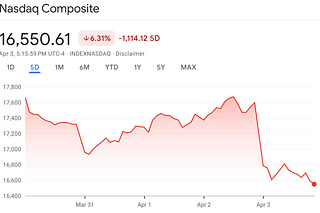
The Naysayers are Wrong. Fusion Will Change the World.
The fusion breakthrough is a modern miracle.
A government laboratory, after decades of tireless effort and many a disappointment, announces that it has achieved the holy grail of green energy—nuclear fusion ignition! And the response has been . . . a damp squib.
A reporter at the Guardian sniffed that what happened at Lawrence Livermore National Laboratory was a “milestone event but not a major one.” Yes, he agrees, “nuclear fusion would have a beneficial impact on our planet by liberating vast amounts of energy without generating high levels of carbon emissions and would be an undoubted boost in the battle against climate change.” So why not cheer? Apparently because failures and hoaxers have claimed breakthroughs in the past that didn’t pan out. Sir John Cockcroft claimed in 1958 that he had achieved success with his Zeta fusion project when he hadn’t. And in 1989, Martin Fleishmann and Stanley Pons told the world they’d achieved “cold fusion” in a laboratory but they turned out to be either frauds or self-deluded. Their experiment was never replicated.
But dry holes and failures are the story of innovation. If previous flops discredit an avenue of research, we’d have to dismiss any scientific advance because whatever it is, someone has failed to achieve it in the past or has lied about it. The spinning jenny? The electric light bulb? Antibiotics? Check. Check. Check. That’s the process. You keep testing hypotheses and building upon the knowledge your failures provide until the day when—eureka!—something works.
That’s what happened in Livermore, California on December 5. An advance in energy production scientists have been chasing for decades but that always seemed out of reach (a reaction that produces more energy than it consumed), was achieved. Yes, briefly, and at extremely high cost, but it happened. Proof of concept. Done. It’s no longer theoretical and that changes everything. Sen. Chuck Schumer was on the money: “This astonishing scientific advance puts us on the precipice of a future no longer reliant on fossil fuels but instead powered by new clean fusion energy.”
But this kind of thoroughly justified enthusiasm was too much for many on both sides of the aisle. A Wall Street Journal editorial allowed as how Well, yes, “there’s good reason to be excited about the breakthrough,” but cautioned that the Biden administration is “overselling” it. Why? Because practical applications are probably decades away, and anyway, this was government-funded research, and the Journal doesn’t want anybody getting the idea that this advance justifies spending more government money. “The fusion breakthrough shows that America still leads the world in innovation, and that what the government does best is basic research, not picking winners and losers.”
But hold on, this was about as basic as basic research gets. And the Journal’s whole argument is that more basic research needs to happen before the technology can have real world applications, so would it really be so terrible if the federal government continues to fund the science? That’s hardly “picking winners and losers.”
The Journal’s editorial was accompanied by a photo of Energy Secretary Jennifer Granholm at the press conference. Somehow, I suspect that if this success had been achieved while Donald Trump was president and Rick Perry was secretary of energy, the Journal would have chastised all the naysayers who claimed that no good could come from his presidency and hailed the potential benefits to the globe, which include solving climate change, obliterating the power of fossil fuel dictatorships like Saudi Arabia, Russia, and Venezuela, permitting desalination of sea water wherever fresh water is scarce around the globe (including southern California and other US locations), vertical farming, reducing poverty, and much more. Instead, they are minimizing the accomplishment under the title “Hold the Nuclear Fusion Hype.”
Over at the Washington Post, meanwhile, the editorial board is unimpressed with this fantastic news for other reasons. Sure, sure, they acknowledge, nuclear fusion power is “tantalizing” but the technology is “unlikely to play a major role in the energy grid for years or decades” and won’t be online in time to fight climate change. So, golf clap for Lawrence Livermore National Laboratory, but now everyone needs to get back to investing in the technologies we know about: solar, wind, carbon capture, and almost as an afterthought, nuclear fission.
Why so sour? First of all, even if commercial application is decades away, the fact that we can now be confident that fusion will be the future source of virtually unlimited, clean, cheap energy has implications for the immediate future. Yes, we have to cut emissions and engage in mitigation strategies in the short run to deal with the climate problem that is upon us, but this strengthens the case for widespread adoption of modular nuclear fission reactors. The biggest objection to nuclear fission is how to handle the radioactive waste. After Livermore’s breakthrough, we know that we won’t be accumulating nuclear waste into the indefinite future, but only for a few decades. It was always worth the trade off to go big on nuclear power, but now it’s an even easier case to make because we know it’s a bridge technology.
Besides, we can’t know that it will really be decades before fusion power plants become a reality. The first mobile phones debuted in 1973. They weighed two and a half pounds and sold for $4000. By 1990, 12 million people had cell phones that slid into breast pockets. By 2002, 62 percent of Americans were able to own the devices that by then weighed a few ounces and also played music, sent and received text messages, held calendars, and cost a few hundred dollars.
It was only 66 years between the Wright Brothers’ first flight and Apollo 11. The Kitty Hawk flight lasted a mere 12 seconds and traveled only 120 feet. Yes, it took decades to reach the moon, but in the interim, human ingenuity created the jet engine, the helicopter, and supersonic flight. And all of that innovation took place in a world without supercomputers, machine learning, extensive international scientific cooperation, and vast wealth. That’s right. Part of what speeds technological progress is wealth. In southern France, 35 nations including China, the European Union, India, Japan, South Korea, Russia, and the United States are participating in a project to create fusion energy. Livermore used an inertial confinement technique. ITER (“the way” in Latin) involves building something called a tokamak that will use magnetic confinement, which many believe is even more promising.
The number of private companies entering the field has been increasing sharply since 2003 and with the announcement from Lawrence Livermore, that figure can be expected to explode. The Journal editorial board can rest easy, private enterprise is already on the case. As reporting in their own paper confirms, the fusion industry is now “white hot.” The CEO of one fusion company shared that, in the past, when he sought investors, “Some would say this is crazy stuff, no, it’s not for me.” But after the Livermore announcement, “We call somebody and we get a meeting immediately.”
We’ve endured more than our share of awful news in the past few years: mass shootings, viral conspiracy theories, plunging trust in institutions, ferocious polarization, the return of inflation, an attempted coup, and a global pandemic. The news about fusion energy is nothing but good. It’s a reminder that America still leads in scientific innovation. It’s a glimpse of an abundant future, freed from one of mankind’s great burdens—expensive, polluting energy. It’s a corrective for the millions of young people around the globe who despair of being able to raise kids of their own for fear of climate catastrophe.
Humans are capable of believing in QAnon, yes, but they’re also able to create a coronavirus vaccine in record time and to harness the power of the sun here on Earth. Despair is not realism—it's a lack of imagination. Historians will record December 5, 2022 as a significant step on the road to clean, abundant, affordable energy. This is a time for gratitude and wonder, not for grinding axes.











